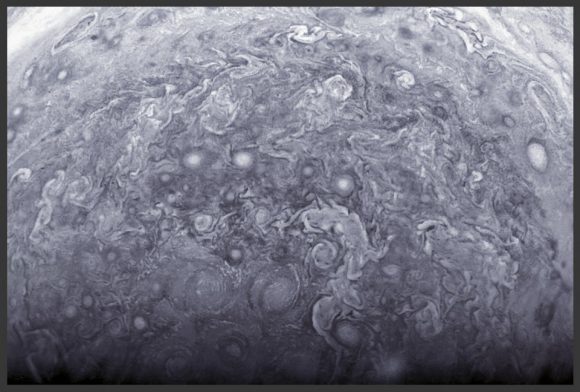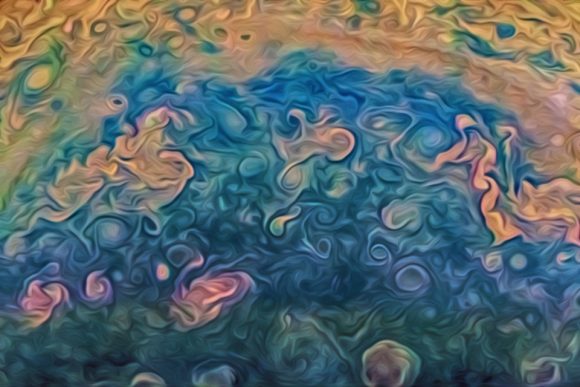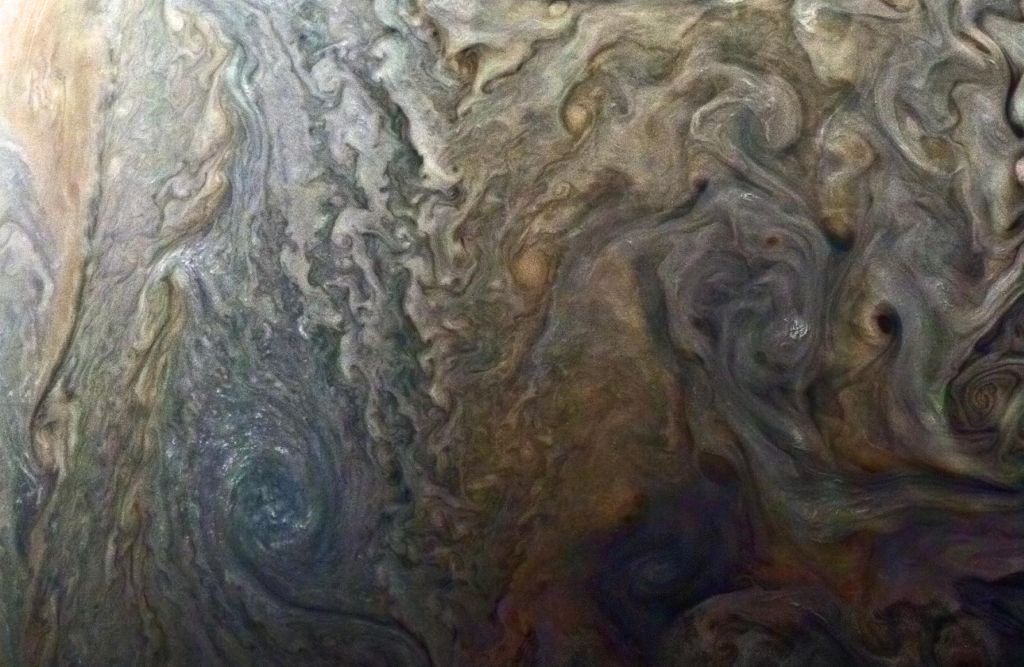Juno is only part way through its mission to Jupiter, and already we’ve seen some absolutely breathtaking images of the gas giant. On Monday, the Juno spacecraft will flyby Jupiter again. This will be the craft’s 5th flyby of the gas giant, and it’ll provide us with our latest dose of Jupiter science and images. The first 4 flybys have already exceeded our expectations.
Juno will approach to within 4,400 km of Jupiter’s cloud tops, and will travel at a speed of 207,600 km/h. During this time of closest approach, called a perijove, all of Juno’s eight science instruments will be active, along with the JunoCam.
The JunoCam is not exactly part of the science payload. It was included in the missions to help engage the public with the mission, and it appears to be doing that job well. The Junocam’s targets have been partly chosen by the public, and NASA has invited anyone who cares to to download and process raw Junocam images. You can see those results throughout this article.

This is Juno’s 5th flyby, but only its 4th science pass. During Juno’s first encounter with Jupiter, the science instruments weren’t active. Even so, after only 3 science passes, we have learned some things about Jupiter.
“We are excited to see what new discoveries Juno will reveal.” – Scott Bolton, NASA’s Principal Investigator for the Juno Mission
“This will be our fourth science pass — the fifth close flyby of Jupiter of the mission — and we are excited to see what new discoveries Juno will reveal,” said Scott Bolton, principal investigator of Juno from the Southwest Research Institute in San Antonio. “Every time we get near Jupiter’s cloud tops, we learn new insights that help us understand this amazing giant planet.”
We’ve already learned that Jupiter’s intense magnetic fields are much more complicated than we thought. We’ve learned that the belts and zones in Jupiter’s atmosphere, which are responsible for the dazzling patterns on the cloud tops, extend much deeper into the atmosphere than we thought. And we’ve discovered that charged material expelled from Io’s volcanoes helps cause Jupiter’s auroras.

Juno has the unprecedented ability to get extremely close to Jupiter. This next flyby will bring it to within 4,400 km of the cloud tops. But to do so, Juno has to pay a price. Though the sensitive equipment on the spacecraft is protected inside a titanium vault, Jupiter’s powerful radiation belts will still take a toll on the electronics. But that’s the price Juno will pay to perform its mission.

Other missions, like Cassini, have been measured in years, while Juno’s will be measured in orbits. And once it’s completed its final orbit, it will be sent to its destruction in Jupiter’s atmosphere.
But before that happens, there’s a lot of science to be done, and a lot of stunning images to be captured.
Here’s an interview with the man leading the Juno Mission: Understanding Juno’s Orbit: An Interview with NASA’s Scott Bolton.
Here is the page for the JunoCam: https://www.missionjuno.swri.edu/junocam


Beautiful images, and to think that originally there was no intention of putting a camera on board.. glad they did! Am wondering when NASA will release intensity and polarity maps of Jupiter’s magnetic field? Did you know that Jupiter’s magnetic field extends all the way to Saturn’s orbit? JUNO won’t be able to see all of that, but what it does observe should be fascinating… can’t wait!
JunoCam is expected to last only 7 orbits due to radiation.
The decision not to fire the main engine to reshape the orbit must’ve been a tough call, especially when considering those rad. dosages.
Hope the Jovians will not shoot it down 😉